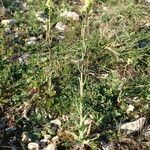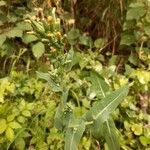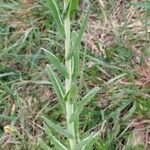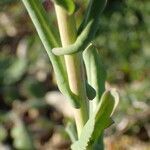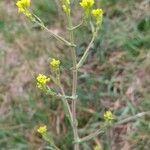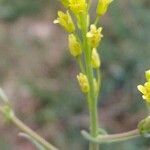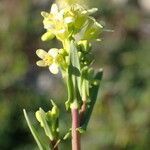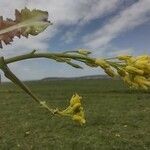Stems branched at or distal to middle, rigid, 2-5(-6) dm. Basal leaves (withered by anthesis); shortly petiolate; blade oblan-ceolate, 2-7 cm × 5-15 mm. Cauline leaves sessile; blade oblong to lanceolate, (1-) 1.5-6(-8)cm × (3-)5-20(-25) mm (smaller distally), apex acute or obtuse. Fruiting pedicels 3-5 mm, (much wider distally, hollow). Flowers: sepals 2.5-3.5 × 0.6-1.4 mm; petals 3-5 × 0.7-1.4 mm, base attenuate; filaments 2.5-3.7 mm; anthers 0.5-0.7 mm. Fruits 4.5-7.5(-8.5) × 2.5-4.5(-5) mm; style (0.8-)1.2-2 mm. Seeds 2-3 × 1-2 mm. 2n = 14.
Glabrous and glaucous annual 3–5 dm; cauline lvs narrowly oblong; obtuse, entire or sparsely denticulate; fls sessile or subsessile, 2 mm wide; mature pedicels appressed, thickened distally, 2–4 mm; fr 5–7 mm; 2n=14. Native of Eurasia, established as a weed here and there in our range.
A herb.
